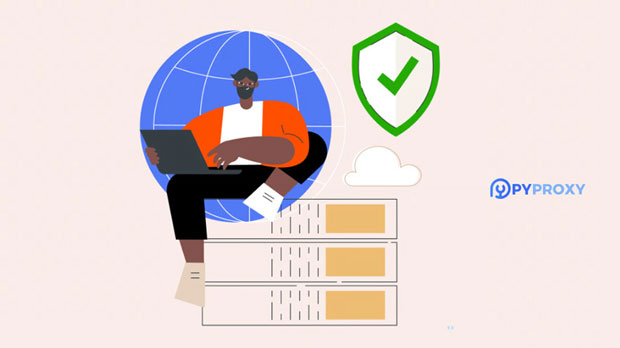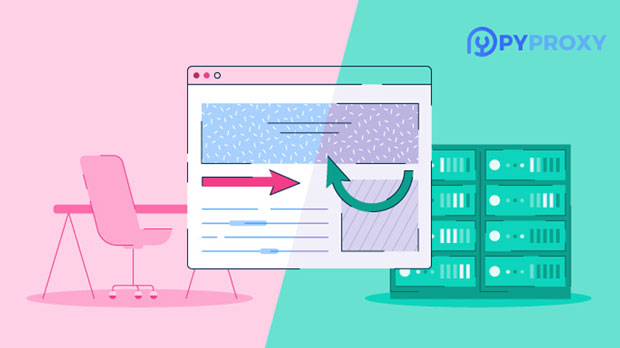How to solve the problem of unstable connection or timeout of proxy IP?
The problem of proxy ip connection instability or timeouts is a common challenge faced by users relying on proxy servers for various tasks like web scraping, anonymity, or bypassing geographic restrictions. This issue can arise from multiple factors including poor server performance, network congestion, or improper configuration. When proxy connections are unstable or time out, it leads to inefficiencies and disruptions in work processes. In this article, we will explore the underlying causes of these issues and provide practical solutions to resolve them effectively. 1. Understanding Proxy IP Connection Instability and TimeoutsBefore tackling the problem, it is important to understand what causes connection instability or timeouts with proxy ips. Connection instability refers to frequent drops in the proxy connection, while timeouts occur when a request takes longer than expected, failing to receive a response in time.The reasons for these issues may include:- Overloaded Proxy Servers: A proxy server may be serving too many users simultaneously, causing delays and instability in connection.- Network Congestion: The overall network traffic might be too high, affecting the proxy’s performance.- Incorrect Configuration: Incorrect settings, such as improper DNS configurations, wrong authentication methods, or mismatch between proxy and network settings, can lead to connection failures.- Geographic Distance: The farther the proxy server is from the user’s location, the more latency can affect the stability and speed of the connection.- Firewall or Security Restrictions: Sometimes firewalls or security systems block certain types of proxy traffic, leading to connectivity issues.2. Troubleshooting Proxy IP Connection InstabilityTo resolve proxy connection instability, a step-by-step troubleshooting approach is recommended:Check Proxy Server LoadIf too many users are using the same proxy server, the load may exceed its capacity. This can lead to slow performance or even disconnections. It is crucial to monitor the proxy server load and, if possible, switch to a server with a lower load. If the server’s load is consistently high, consider choosing a different proxy provider that offers a more balanced load distribution.Optimize Network PerformanceNetwork congestion can significantly affect proxy performance. Users should ensure their local network is not overloaded with traffic. If possible, use a wired connection over Wi-Fi, as wired connections tend to offer more stable and faster performance. Additionally, checking for background applications that consume bandwidth can help in improving the overall network stability.Verify Proxy SettingsIncorrect proxy configuration is a common cause of connection instability. Users should ensure their proxy settings, such as IP address, port number, DNS settings, and authentication credentials, are correctly configured. Even a small mistake in configuration can result in frequent disconnections or timeouts. Also, ensure that the proxy is compatible with the desired application or website.Test Different Proxy ServersNot all proxy servers are created equal, and performance can vary greatly depending on the type and location of the server. Testing multiple proxy servers can help in identifying the most stable ones. Using proxies that are geographically closer to the user’s location can significantly reduce latency and improve stability.3. Solutions to Prevent Proxy IP TimeoutsWhile connection instability is one issue, timeouts pose another significant challenge. A timeout happens when the proxy does not respond within the designated time limit, leading to failed connections. Here are some practical solutions to prevent this issue:Adjust Timeout SettingsSome proxies have adjustable timeout settings that can be configured to be more forgiving, especially for tasks that may take a longer time. If timeouts are occurring frequently, users should consider adjusting these settings to allow more time for the proxy to complete the requested action.Use Reliable Proxy TypesThe type of proxy used can influence how well it handles time-sensitive tasks. Some proxies, such as residential proxies or dedicated proxies, tend to offer more stable and faster connections compared to shared proxies. Residential proxies, for example, use real IP addresses from Internet Service Providers (ISPs), which are less likely to get flagged or restricted by websites.Limit Simultaneous ConnectionsHaving too many simultaneous connections can overwhelm a proxy server, leading to timeouts. Users should limit the number of concurrent connections to the proxy, ensuring that each request has enough resources to complete without delays.Monitor and Optimize Server PerformanceIf users have access to the proxy server’s performance metrics, they should regularly monitor it for any signs of high latency or overload. Regular maintenance, including updating software and clearing logs, can help maintain optimal server performance and prevent timeouts.4. Using Redundancy to Avoid DowntimeTo avoid both instability and timeouts, users can implement redundancy systems. This involves using multiple proxy servers to distribute the load, ensuring that if one server becomes slow or unresponsive, others can take over the traffic. Setting up failover mechanisms will ensure continuous, uninterrupted service, even during high traffic periods or server failures.5. Additional Tips for Improving Proxy PerformanceChoose the Right Proxy ProtocolDifferent proxy protocols, such as HTTP, HTTPS, SOCKS5, and others, have varying performance characteristics. Depending on the specific use case, users should select the protocol that offers the best speed and reliability for their tasks. For instance, socks5 proxies are often more versatile and can handle a wider range of traffic types, including both HTTP and non-HTTP data.Implement Load BalancingFor larger operations, implementing a load balancing system can distribute traffic across multiple proxy servers, reducing the strain on individual servers. This helps to prevent any single server from becoming overloaded, improving the overall stability and performance of the proxy network.Use a Proxy Rotation StrategyFor tasks that require numerous requests, such as web scraping, it is beneficial to use a proxy rotation strategy. Rotating through multiple proxies at regular intervals helps avoid overusing a single proxy, reducing the chances of that proxy being flagged, banned, or overloaded.6. ConclusionIn conclusion, addressing proxy IP connection instability or timeout issues requires a comprehensive approach that involves understanding the root causes, optimizing network settings, and implementing practical solutions. By ensuring proper configuration, monitoring server load, selecting the right proxy types, and utilizing redundancy systems, users can significantly improve their proxy experience. Additionally, making small adjustments, such as fine-tuning timeout settings and rotating proxies, can further enhance performance and reduce disruptions. With these strategies in place, users can resolve proxy connection issues effectively, ensuring smoother operations and more reliable performance.
2025-02-01
























































